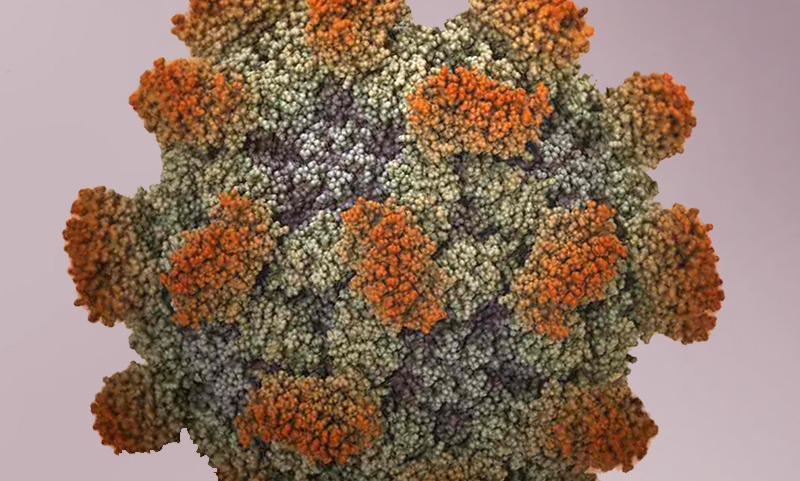HEPATITIS E virus should be considered in patients with unexplained acute hepatitis, even if they have not travelled overseas, warn experts after identifying a locally acquired outbreak of the infection in NSW.
A report published in today’s MJA details an outbreak of 24 cases of infection with hepatitis E virus (HEV) in NSW, 17 of which could be linked to eating pork liver pâté at one restaurant between October 2013 and May 2014. The other seven cases were linked to pork products bought from four butchers and three supermarkets, and sourced from at least two different suppliers.
The authors noted that this was the first recorded outbreak of locally acquired HEV in Australia. An investigation confirmed that the restaurant was adhering to food safety and handling standards, but the authors noted that it was nevertheless possible that contaminated pork livers used for the pâté at the time of the outbreak may have been undercooked.
Dr Jeremy McAnulty, Director of Health Protection at NSW Health and a co-author of the study, said given the widely held belief that HEV was only acquired overseas, identifying related HEV infections in people who had not travelled was “serendipitous”.
“Clinicians really thought that all hepatitis E was overseas acquired, it was just a travel-associated illness, and that made it hard to find cases,” Dr McAnulty told MJA InSight.
- Related: MJA — First reported outbreak of locally acquired hepatitis E virus infection in Australia
- Related: MJA — Local transmission of hepatitis E virus in Australia: implications for clinicians and public health
- Related: MJA — Domestically acquired hepatitis E successfully treated with ribavirin in an Australian liver transplant recipient
- Related: MJA — Hepatitis E virus: overseas epidemics and Victorian travellers
NSW Health was notified of two HEV apparently unrelated cases in travellers within 2 weeks in late 2013. “Each person had been tested because of preceding travel, albeit outside the incubation period for HEV infection,” the authors wrote.
But it wasn’t until further notifications in 2014 about a non-traveller and a work colleague from another state that a link with the restaurant was made. Case-finding and further testing revealed the full extent of the outbreak.
Common laboratory testing practice has been to test for HEV infection only in patients who had travelled overseas.
With wider testing for HEV, Dr McAnulty said it would be expected that more cases of locally acquired infection would be detected.
“At the time of the outbreak we did a fair bit of communication with clinicians … to raise awareness and we found some more [cases] – some restaurant-associated cases, but also some other cases in the community,” he said. “There weren’t huge numbers, but we suggest that this is endemic, at low levels, in the Australian community.”
Associate Professor Ben Cowie, a Royal Melbourne Hospital infectious diseases physician and Director of the WHO Collaborating Centre for Viral Hepatitis at the Doherty Institute, described the NSW outbreak as a “wake-up call” for clinicians and public health authorities.
He said it was concerning that locally acquired cases of HEV may have gone undetected in the past.
“One of the notable things about hepatitis E is if a pregnant woman, particularly in the first trimester, becomes infected, then there can be very poor outcomes both for the woman and for the baby,” he said, adding that HEV had a mortality rate of about 20% in pregnant women. “That is a real concern.”
Professor Cowie, who commended NSW Health for identifying the outbreak, said this report should reinforce the importance of being alert to the possibility of HEV infection.
“It’s still the case that hepatitis E is predominantly a travel infection in the Australian context, however this report does make clear that locally acquired hepatitis E is something that clinicians need to be thinking of.”
Associate Professor Sanjaya Senanayake, Infectious Diseases Physician and Associate Professor of Medicine at ANU Medical School, said it was important to raise awareness of the possibility of locally acquired hepatitis E, but it was not cause for panic.
“It’s important to know it’s out there, but I don’t think we should panic,” Professor Senanayake told MJA InSight. “If we do see sporadic or single cases of acute hepatitis, or outbreaks of acute hepatitis that seem a lot like hepatitis A, but we’re not getting hepatitis A tests that are positive, even without overseas travel, we have to think about hepatitis E.”
While Professor Senanayake agreed that HEV could be very dangerous to pregnant women, many cases were asymptomatic or only mildly symptomatic.
He suggested that there may also be some shedding of the virus by returned travellers.
“You can’t discount the fact that people are coming back from parts of the world that have known hepatitis E that is endemic and because they are asymptomatic, it has a long incubation period, they could potentially be, in small or large numbers, shedding it in their stool and contaminating the sewerage,” Professor Senanayake said.
Improved detection would help public health authorities to trace contacts and identify sources of infection to prevent larger outbreaks, he said.
An editorial accompanying the MJA report called for clinician education and the promotion of public health measures to limit the food-borne transmission of the virus.
Dr McAnulty said there was room for greater awareness in both the clinical and food handling sectors.
“Many people won’t be thinking of hepatitis and might rarely see someone with hepatitis, and when they do, they will remember hep A, B and C,” he said. “So there is more work to do in terms of communicating that to our clinicians and laboratories as well.”
Dr McAnulty added that it was crucial to inactivate HEV in pork products, particularly pork livers, by cooking them until they reached 75C at their thickest part for 2 minutes.

 more_vert
more_vert